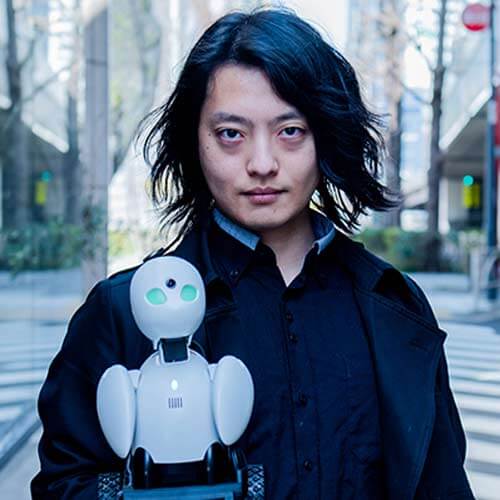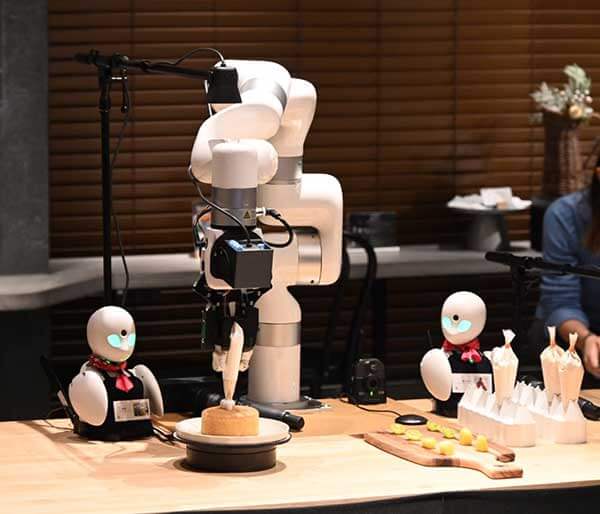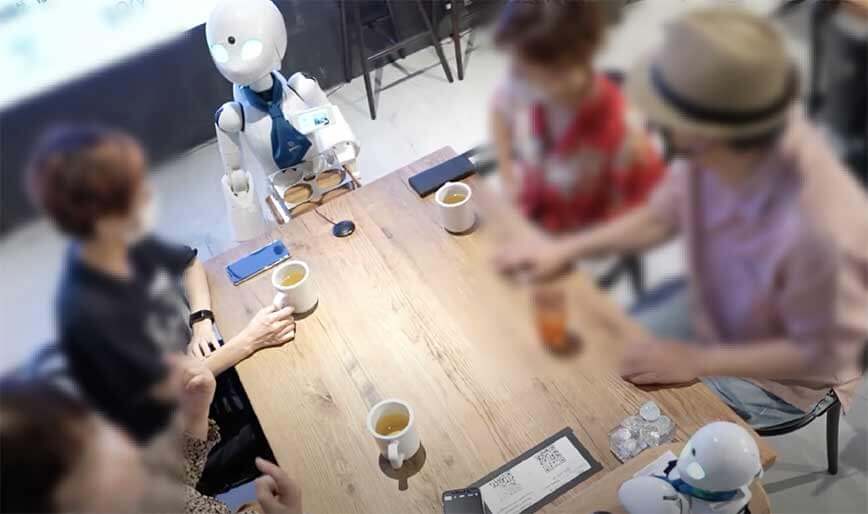Discovering New Ways for Disabled People to Work Through Avatars
Ory Laboratory Inc. × KMD “Cybernetic Avatar Technology and Social System Design for Harmonious Co-experience and Collective Ability”
KMD and Ory Laboratory Inc. are currently working on “Cybernetic Avatar Technology and Social System Design for Harmonious Co-experience and Collective Ability,” a research project conducted as part of the Moonshot R&D Program promoted by the Cabinet Office and the Japan Science and Technology Agency (JST). Professor Kouta Minamizawa describes the ultimate goals of the project as, “First, to enable new ways of living and working using the novel physicality embodied in avatar technology. Second, to explore the possibility of creating infrastructures that can share human experiences and sensations in a digital environment.”
In 2010, the Ory Laboratory created the OriHime avatar robot based on CEO Kentaro Yoshifuji’s own personal experiences with hikikomori, acute social withdrawal. His thought process when making OriHime was, “To create a way of living that was true to the experiences I and others had during that time.” Since the company’s inception, it has worked to provide opportunities for those who have difficulty leaving their homes due to disabilities or illness, enabling them to work and participate in social spaces. In 2020, they opened Avatar Robot Cafe DAWN ver.β in Nihonbashi. This cafe has “pilots” who work remotely throughout Japan operating the OriHime robots that serve customers. This approach has helped it thrive with a consistent and large fanbase of regular customers.
To date, two public experiments have been conducted through the Avatar Robot Cafe DAWN ver.β. The first was the “Parallel Avatar Experiment” in which a single pilot switched between various OriHime bots to provide complete service to guests from the moment they walked in until they waved goodbye at the door. It was an incredible success, both increasing the general hospitality displayed towards customers and giving pilots a heightened sense of accomplishment for their work. The second was the “Collaborative Avatar Experiment” in which two pilots cooperated in using the arms of a single robot to decorate a cake. The task revealed that by having the pilots help each other in difficult situations, the two individuals were able to produce more creative results through collaboration.
Through these initiatives, the project aims to create a society in which cybernetic avatars can transcend the physical limitations of one’s birth and provide a society filled with rich experiences. When discussing his research Professor Minamizawa said, “Is an avatar used as an alter-ego the same as the original person? It’s possible that in the future, our understanding of a ‘human‘ may change to become detached from our physical bodies.” What type of social systems will become necessary at that time? How can people share their values in an international context? This project will continue to seek to confront these questions using multidimensional methods to bring about a brighter future.
(This article was written in March 2023.)


